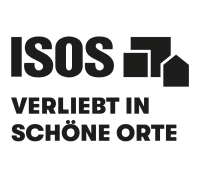Erlenbach im Simmental
Intro
The fine farming village and service centre of Erlenbach is nestled among the delightful Simmental landscape in the foothills of the Alps at the feet of the Stockhorn, from where you can enjoy an impressive view of 200 mountain peaks.
Erlenbach is an old service centre with an almost small-town character in places. The historic buildings run mainly along the main access road and are divided into two separate residential cores – the Kleindorf (small village) in the west and the Grossdorf (large village) in the east, over which the church and its surroundings tower.
From the 16th century, the village developed into a marketplace via which Simmental fattened cattle and Erlenbach horses were exported. The breeding and trade of the animals and the export of cheese brought the village great prosperity in the 17th and 18th centuries, as still reflected in the well-preserved, prestigious residential buildings of the wealthy livestock and cheese traders. The village features numerous well-preserved single structures from various eras, built in the traditional regional style. In addition to Simmental houses, richly decorated with ornate carvings, these also include the Ründihäuser (with arched, connected tympana and elements of typical Bernese farmhouse architecture) built after a village fire in 1765 in the Grossdorf, the historic inns and the mediaeval church with its rectory and the Pfrundscheune (a barn-like church hall).
The Agensteinhaus, which bears witness to the superior Simmental art of carpentry, stands directly below Erlenbach village square. Today, the building is a museum, housing exhibitions on local crafts and the history of horse and cattle breeding.
From Erlenbach, it takes 20 minutes by cable car to reach the Stockhorn. The view from up here is superb. A number of hiking trails lead from the summit down into the valley.
ISOS
ISOS is the Federal Inventory of Swiss Heritage Sites of national importance. The inventory is maintained by the Federal Office of Culture (FOC) and lists the most significant settlements in Switzerland. Today, some 1,200 places are included in the inventory, from hamlets right through to cities. The inventory provides information on the development and identity of the settlements listed in it, thereby contributing to the preservation of architectural diversity in Switzerland and promoting both sustainable planning and a high-quality Baukultur.








